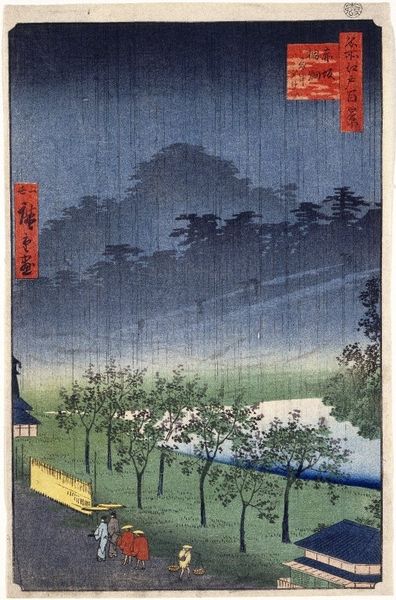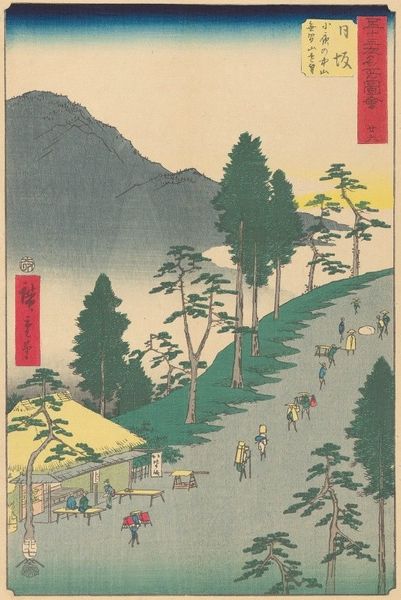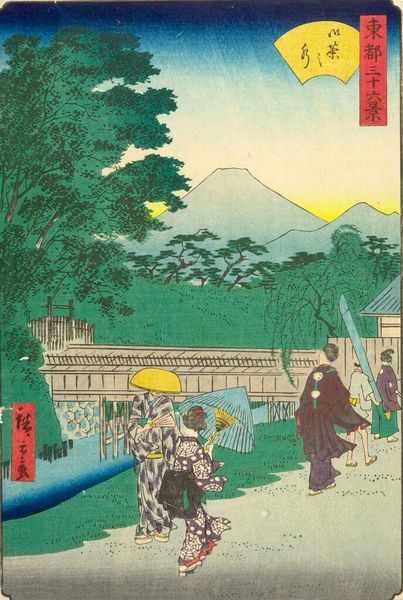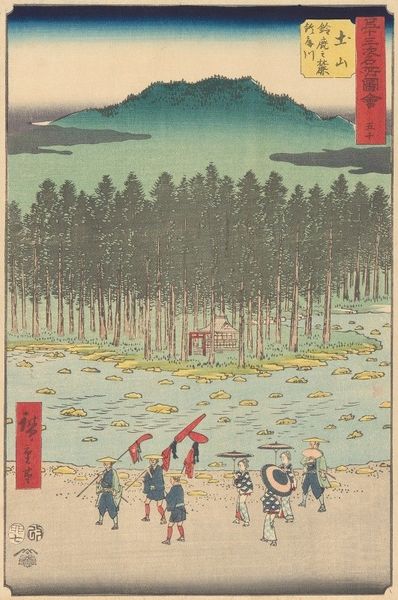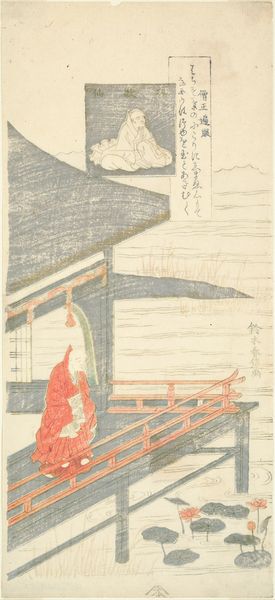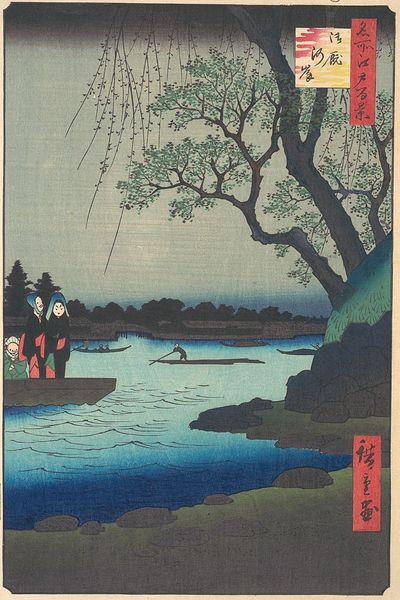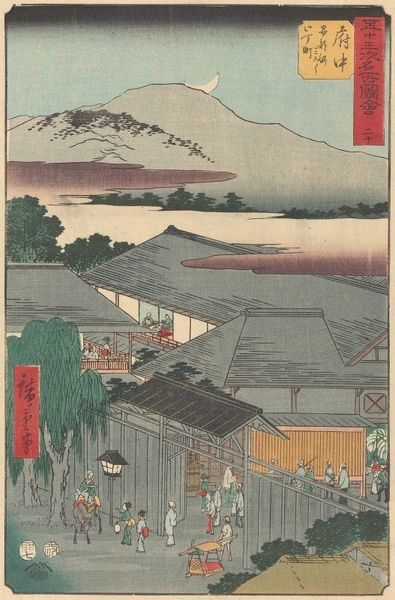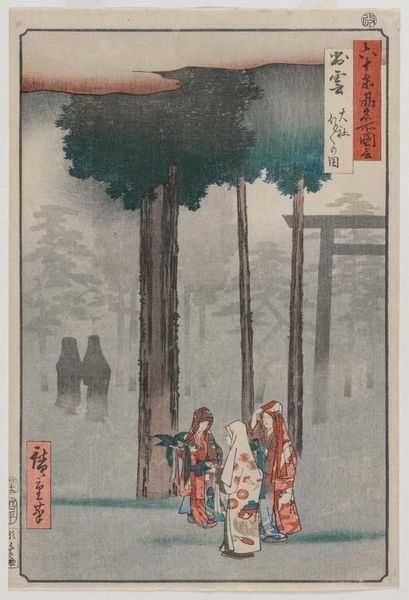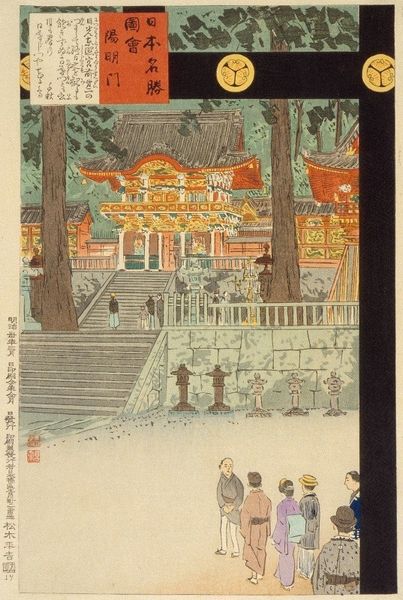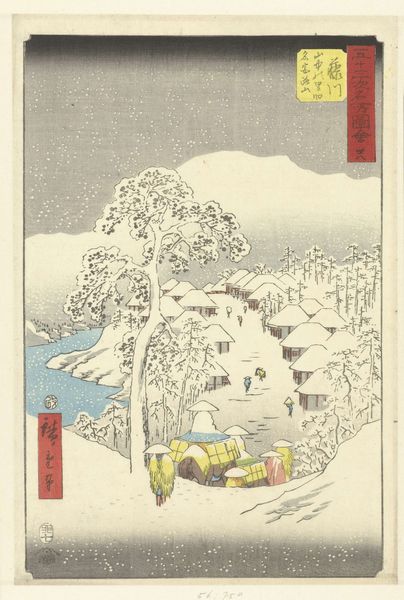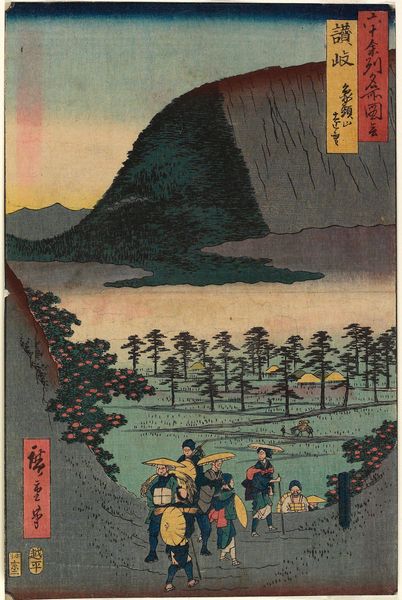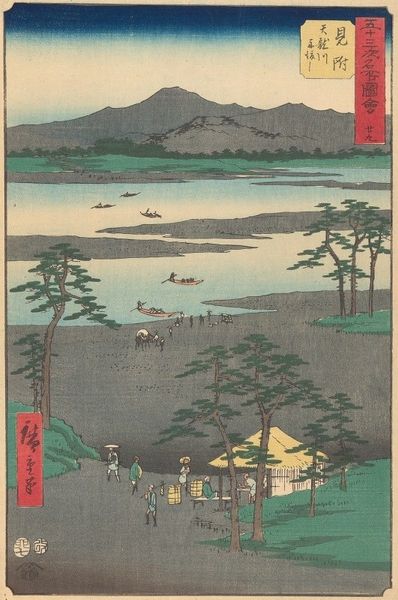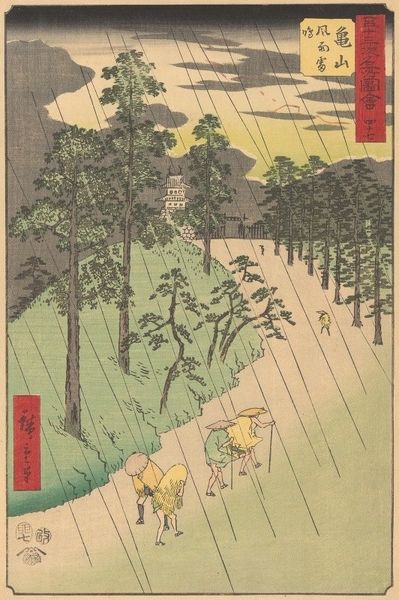
Dimensions: 14 5/16 × 9 3/16 in. (36.3 × 23.4 cm) (image)23 × 19 × 1 1/2 in. (58.42 × 48.26 × 3.81 cm) (outer frame)
Copyright: No Copyright - United States
Editor: Okay, next up is "Futatsu Hall at Nikkō," a woodblock print created around the 1930s by Hasui Kawase. It's incredibly atmospheric, so grey and rainy. It makes me feel a little melancholy, which I kind of love. What do you see in this piece? Curator: Well, you've nailed the mood, haven’t you? That somber feeling just clings to everything, doesn't it? I love how the artist captures the light reflecting off the wet surfaces – those subtle shimmers of ink. Do you notice how the red of the buildings really pops against that misty green backdrop? It’s almost dreamlike, isn’t it? A world softened by the rain. But beneath the surface beauty there's a quiet strength – like the resilience of nature itself, come rain or shine. Editor: It does feel very resilient. Why do you think Kawase chose this subject in the rain? It seems such an unusual perspective. Curator: That's a wonderful question! In Ukiyo-e tradition, it’s all about capturing fleeting moments, these "pictures of the floating world." So, a rainy day wasn't a flaw to be avoided, but an opportunity to show the world in a different light - literally and figuratively! There's an appreciation for the imperfect, for the beauty in transience. Did you notice how, despite the soft, watercolor-like washes of color, the forms are clearly delineated? Editor: Yes, I see what you mean! It’s almost like he’s trying to find structure within the chaos of the rain. Curator: Exactly! He's making sense of the sensory experience in a way. A single man travels along his road…a small moment in the shadow of so much time! Editor: That’s really beautiful. I will always look at a rainy day differently from now on. Curator: That's the joy of art, isn't it? Shifting our perspective, allowing us to discover new ways of seeing… even on a cloudy day!
Comments
minneapolisinstituteofart about 2 years ago
⋮
On back: red seal 参百五拾枚限絶版、第八十二號 {sanbyakugojū mai kagiri zeppan, dai hachijūni gō} (edition of 350, no. 82); stamp: MADE IN JAPAN. Second edition, published by Kawaguchi alone in the 1930s.
Join the conversation
Join millions of artists and users on Artera today and experience the ultimate creative platform.

